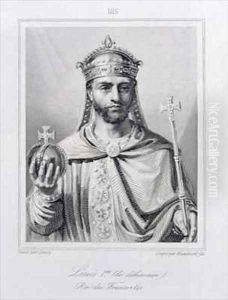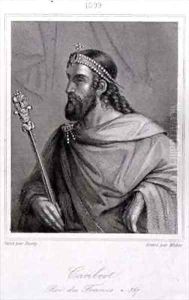Dassy, Jean Joseph Paintings
Jean Joseph Dassy was a French painter, born on October 4, 1765, in Marseille, France. He was primarily known for his historical scenes and portraits, although his oeuvre also includes landscapes and genre paintings. His artistic career spanned a turbulent period in French history which included the French Revolution, the Napoleonic era, and the Restoration period.
Dassy received his initial art education at the École de Dessin de Marseille before moving to Paris to further his studies. In Paris, he became a pupil of Jacques-Louis David, the preeminent French painter of the Neoclassical movement. David's influence was evident in Dassy's work, particularly in his approach to composition and his use of clean lines and classical subjects. However, Dassy also developed his own distinctive style, particularly in his portraits, which often captured the character and social standing of his subjects.
Throughout his career, Dassy exhibited his work at the Paris Salon, the official art exhibition of the Académie des Beaux-Arts in Paris. His paintings were well-received, and he gained a reputation as a skilled painter of historical and mythological scenes. This led to several commissions from the government and private patrons, which helped to establish his career.
Despite his success, Dassy's life and career were not without challenges. The political upheavals of the time affected the arts, and Dassy, like many artists of his era, had to navigate the changing political landscapes and tastes. This included adapting his artistic style to suit the different regimes and their respective cultural policies.
Jean Joseph Dassy continued to paint until his later years and died on July 12, 1844, in Paris. While not as widely remembered today as some of his contemporaries, Dassy's contributions to French art during the late 18th and early 19th centuries were significant. His works are held in various museums and collections, where they continue to be studied and appreciated for their technical skill and historical value.

